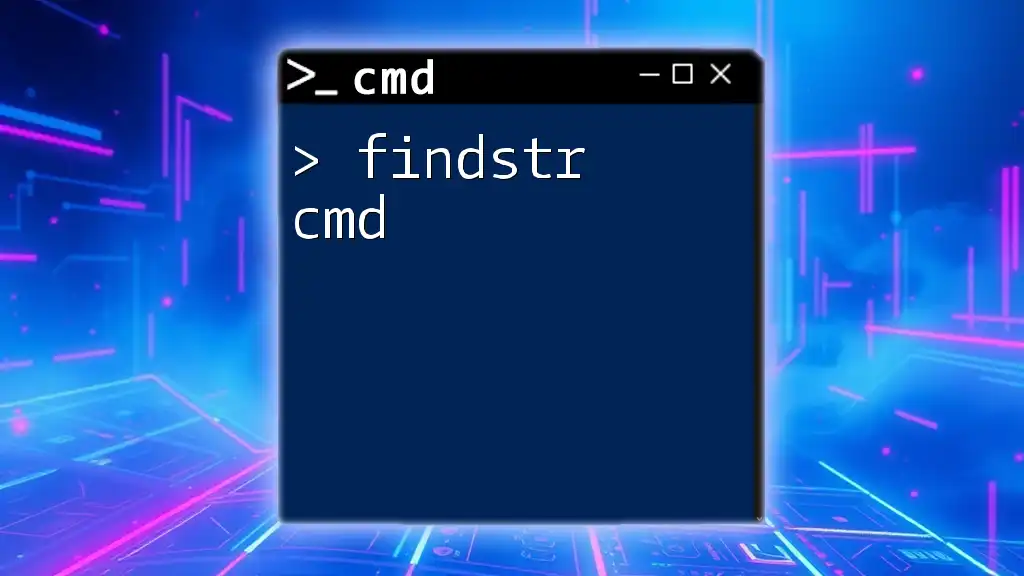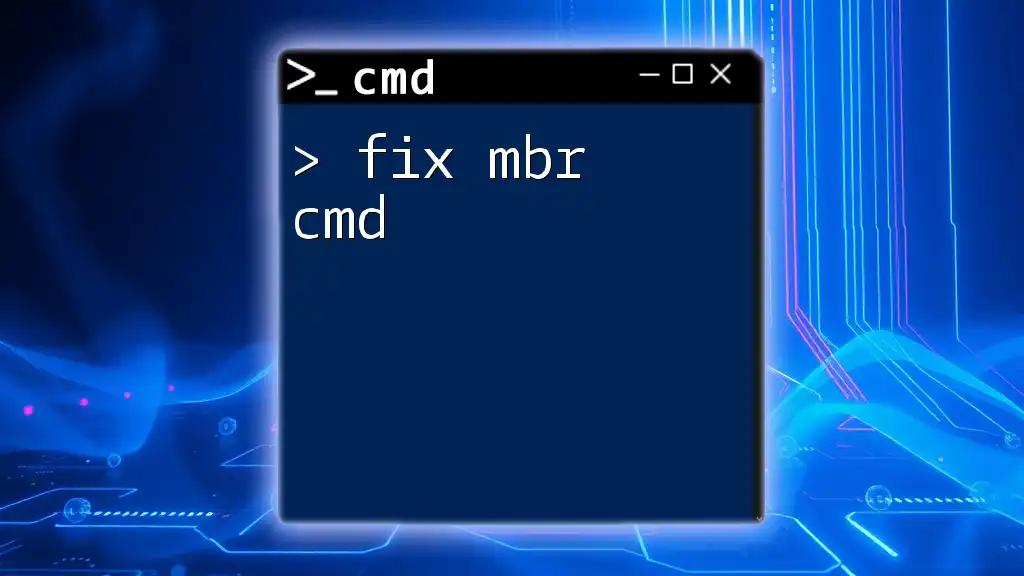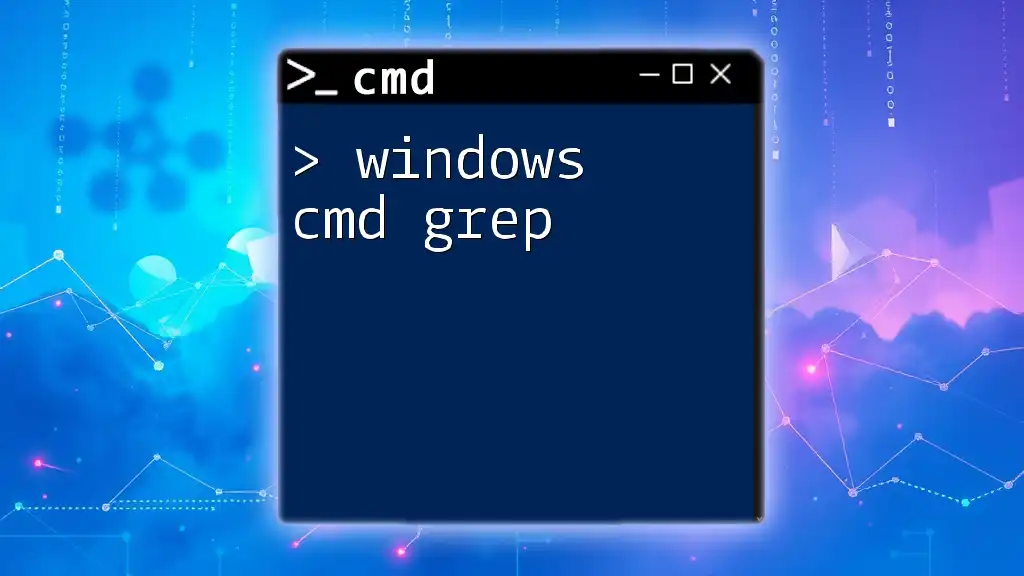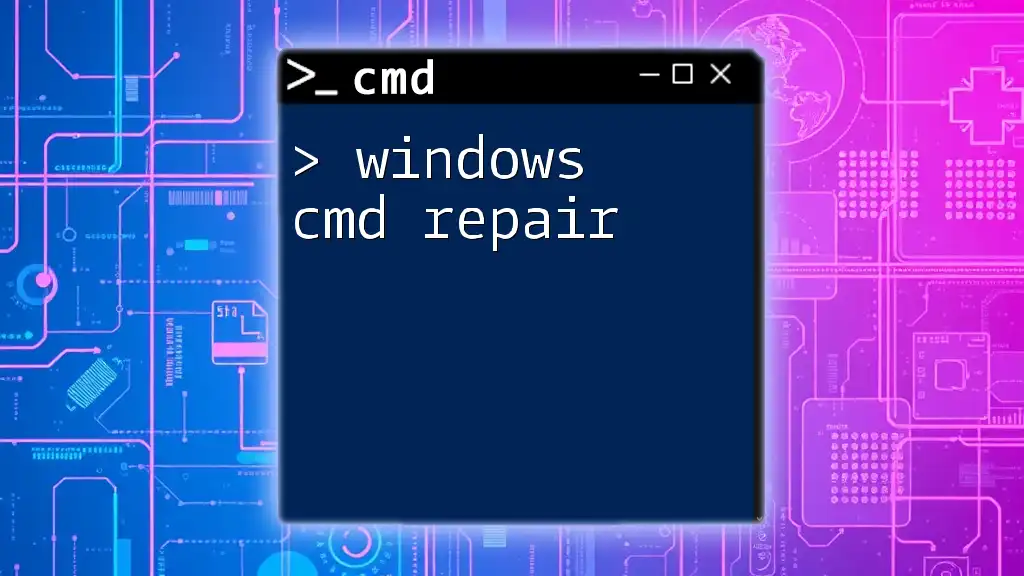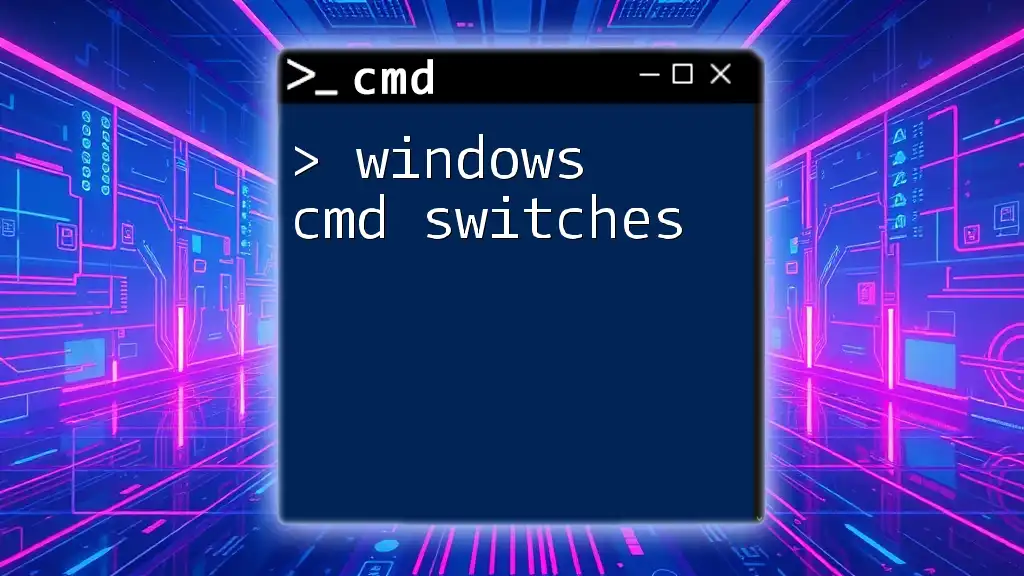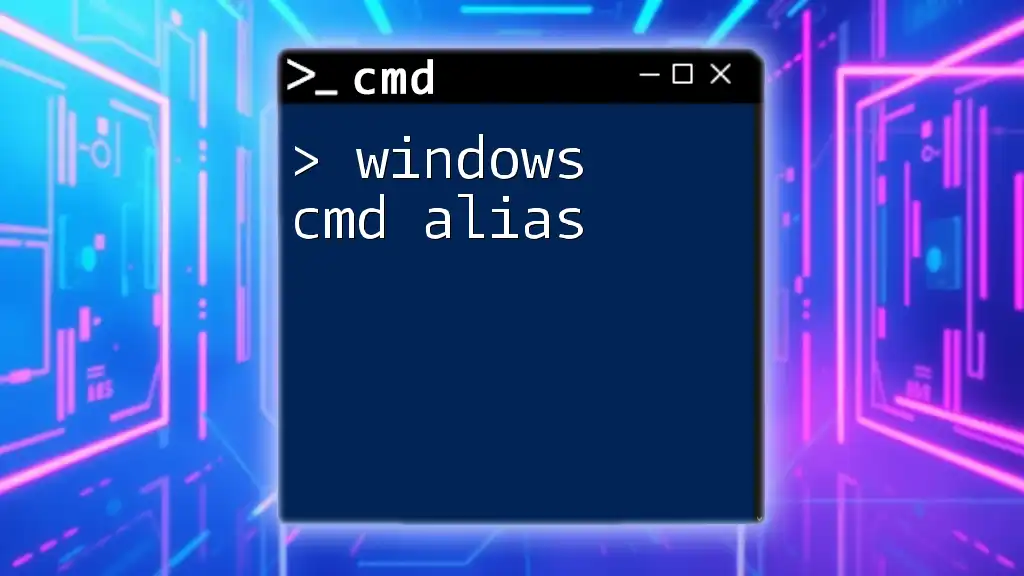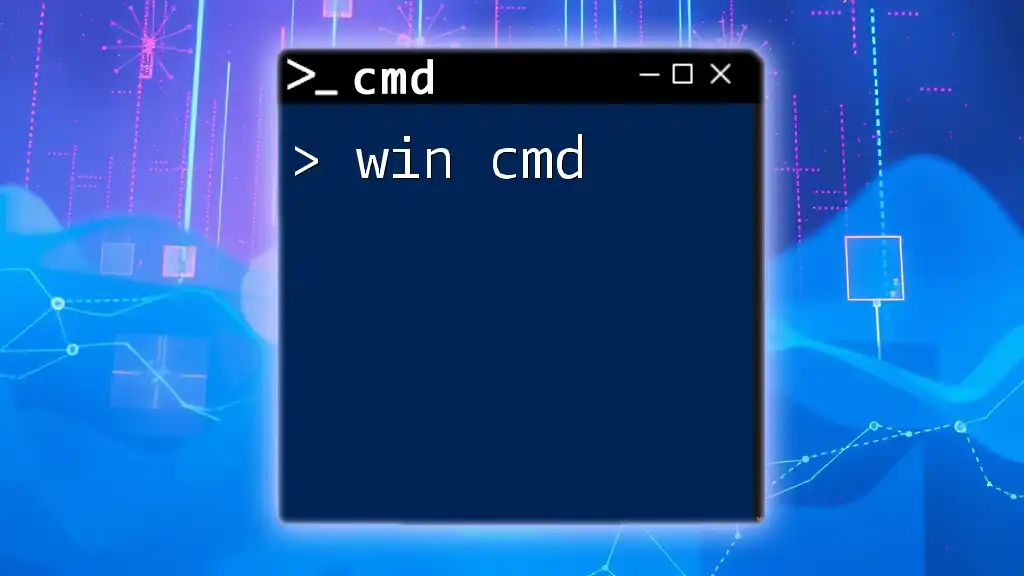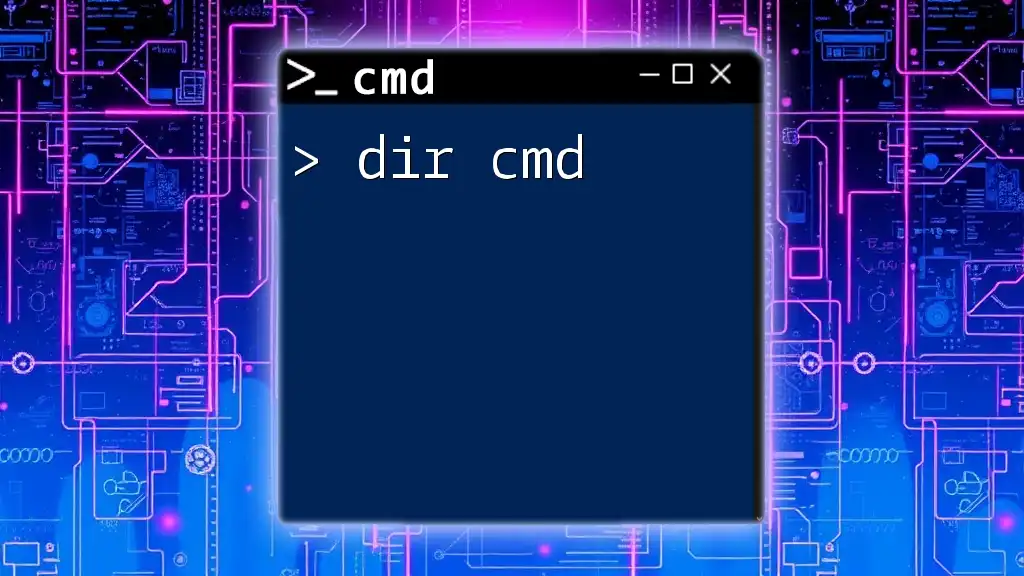The `findstr` command in CMD is a powerful utility that searches for specific strings of text within files or input, allowing users to quickly locate information in large data sets.
Here’s an example of how to use the `findstr` command to search for the word "example" in all `.txt` files in the current directory:
findstr "example" *.txt
What is findstr?
The findstr command is a powerful tool in the Windows command line that allows users to search for specific strings of text within files. It's often used for text processing and can scan through multiple files at once, making it a vital utility for troubleshooting logs or analyzing source code. Unlike some other command line tools, findstr supports basic regular expressions, giving it enhanced search capabilities that can be tailored to complex queries.

Basic Syntax of findstr
Understanding the syntax is crucial when working with the findstr cmd command. The basic structure of findstr is as follows:
findstr [options] "search_string" [file_name]
Breakdown of Parameters
- search_string: This is the specific term or phrase you wish to search for within your designated files.
- file_name: This indicates one or more files where you want to conduct the search. You can use wildcards here, such as `*`, to search multiple files simultaneously.
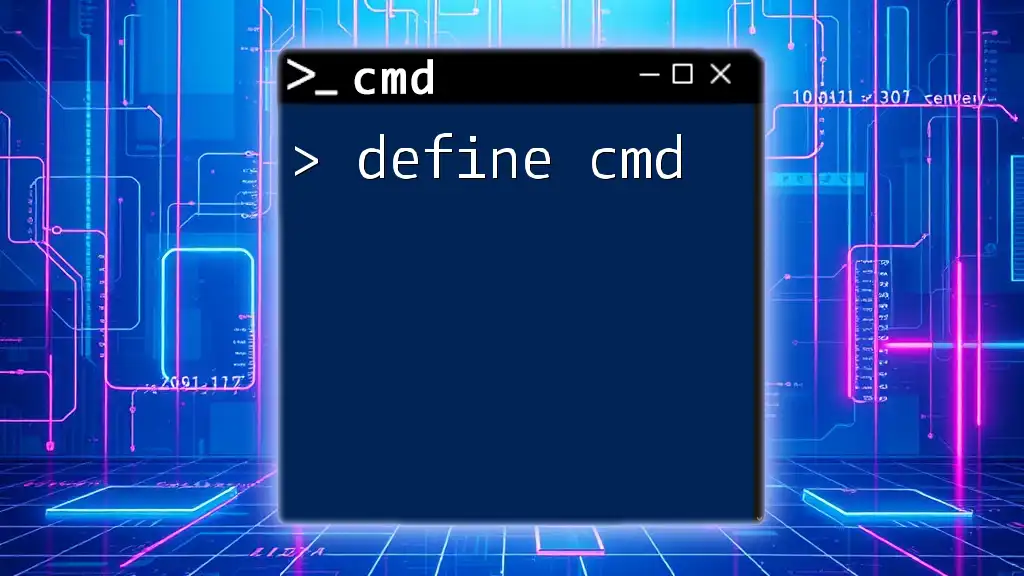
Common Use Cases for findstr
Searching for a Simple String
One of the most common use cases for findstr is searching for a specific term in a text file. For instance, if you want to find occurrences of the word "error" in a log file, you would use:
findstr "error" logfile.txt
The output will list all lines containing the term "error," making it easier to pinpoint issues in your logs.
Case Sensitivity Options
By default, findstr performs case-sensitive searches. However, you often need case-insensitive searches, especially with varied data input. For this, you can use the `/i` option:
findstr /i "Warning" logfile.txt
This command will match "Warning," "warning," and "WARNING," providing a more comprehensive search across different text cases.
Matching Whole Words
Sometimes, you may want to search strictly for whole words to avoid partial matches. The `/x` option allows you to do just that:
findstr /x "success" logfile.txt
This command will return lines that contain "success" exactly, excluding any instances where "success" is part of a larger word, like "unsuccessful".
Searching Multiple Files
To enhance efficiency, findstr can search through multiple files simultaneously. You can use wildcards effectively:
findstr "keyword" *.txt
This command will scan all `.txt` files in the current directory and list lines containing the specified keyword. It saves time when dealing with numerous files while ensuring all relevant data is collected.
Using Regular Expressions
Findstr supports basic regular expressions, providing flexibility in how searches are conducted. For more complex results, you can leverage regex patterns. For example:
findstr /r "^[A-Z].*error.*$" logfile.txt
In this command, findstr searches for lines starting with an uppercase letter and containing the word "error." This allows for more nuanced searches, particularly in structured data.
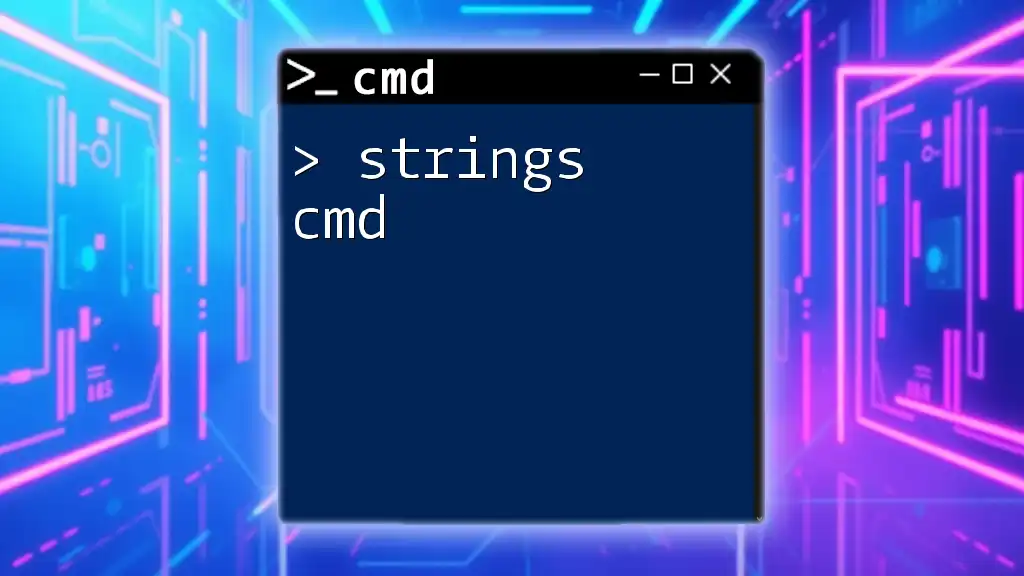
Advanced Features of findstr
Using the /S Option
The `/S` option enables searching through subdirectories, making it powerful for extensive datasets located in nested folders. Here's how to use it:
findstr /S "TODO" *.*
This command will find all occurrences of "TODO" in all files across all subdirectories, offering quick access to notes or reminders buried in the codebase.
Line Numbers with /N
Including line numbers in search results can be incredibly helpful for identifying where an issue occurs. The `/N` option lets you see line numbers alongside your search results:
findstr /N "example" logfile.txt
This output will display the line numbers, making it straightforward to navigate the file and make necessary adjustments.
Excluding Specific Files with /P
Occasionally, you might want to exclude certain files from your search parameters. The `/P` option allows you to skip specified file types, which can help streamline results:
findstr /P "*.exe" logfile.txt
This will ensure that any `.exe` files are not included in the list of results, focusing your search on files of interest.
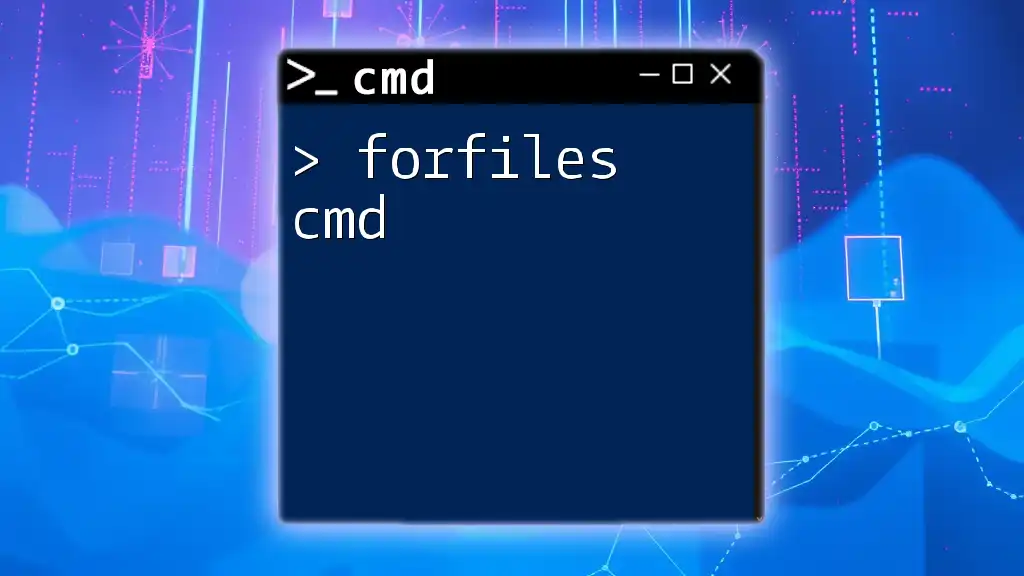
Tips for Effective Use of findstr
When employing the findstr cmd, consider these best practices:
- Revisit Syntax: Always review the syntax and options to maximize the command's full potential.
- Combine with Other Commands: Using findstr with piping can direct the output from one command directly into another, enhancing productivity. For instance, you can pipe the output of a directory listing to findstr:
dir | findstr "file" - Practice Regular Expressions: Familiarizing yourself with regex patterns can expand your ability to perform intricate searches.
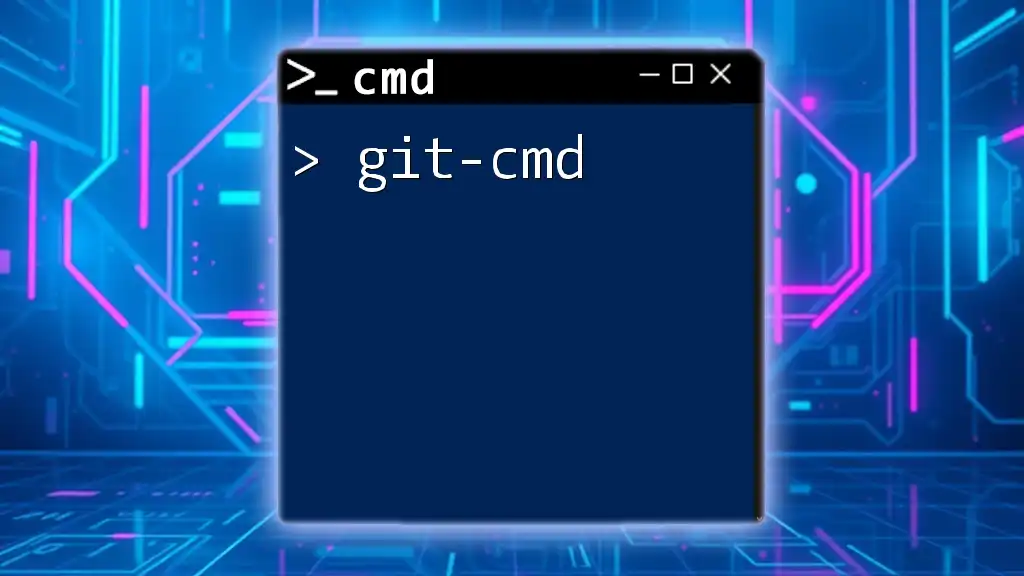
Real-World Examples
Here are several scenarios showcasing findstr as a pivotal tool:
- Analyzing Logs: Quickly locate critical errors in log files during troubleshooting sessions.
- Searching Source Code: Identify specific function calls or variables in extensive codebases, streamlining debugging and development tasks.
- Filtering Text Outputs: Extract pertinent information from lengthy command outputs, such as configuration settings or system information.
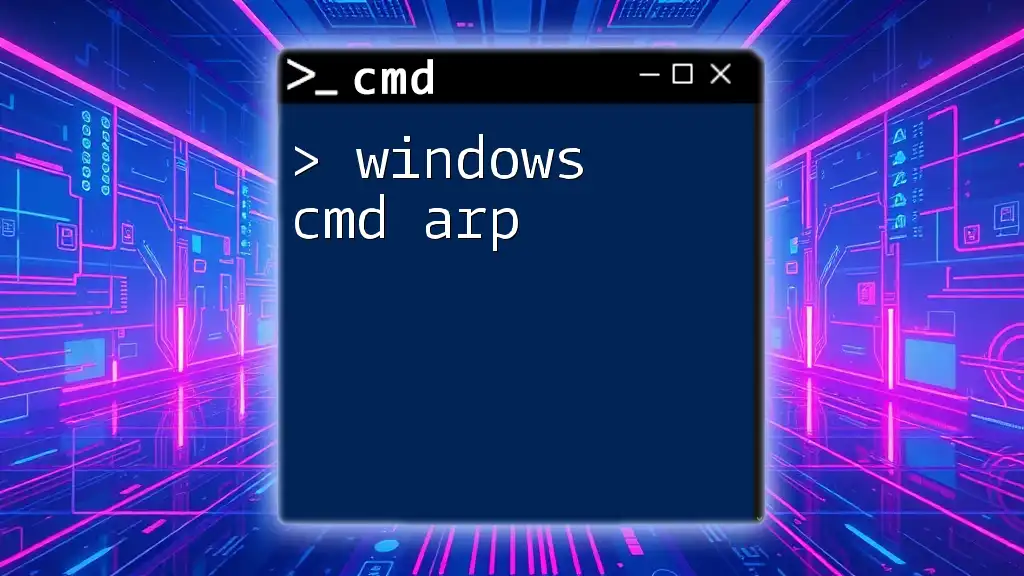
Troubleshooting Common Issues
While using the findstr command, users may encounter a variety of issues:
- Error Messages: If an error message appears, carefully read it to identify the problem—typically revolving around file not found errors or incorrect syntax.
- No Results Found: Ensure that the search string correctly matches the data in the file and that you’re searching the right file or directory.

Conclusion
Mastering the findstr cmd command enhances your ability to process and analyze text data quickly and efficiently. As you practice and employ these commands, you'll find that your productivity increases significantly. The command line tools, including findstr, are invaluable skills that can simplify your workflow, regardless of your technical background.

Additional Resources
For further exploration, consider reviewing the official Microsoft documentation on findstr and check out online tutorials that delve deeper into command line utilities. These resources can significantly bolster your understanding and proficiency with the Windows command line.

Call to Action
Stay tuned for more insightful cmd tutorials and consider subscribing to our newsletter for exclusive content. Don’t forget to download our free PDF guide for quick reference on the findstr command and other essential cmd commands!

